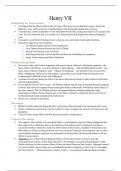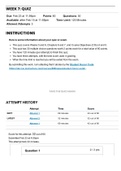Summary
Summary AQA A-Level 1C Tudors: Henry VII Revision Notes (A* achieved)
- Course
- Institution
- Book
Detailed revision notes for Henry VII (), part of the AQA A-Level 1C The Tudors: England, specification. Notes are easy to understand and full of relevent evidence to improve your essays. Areas covered include: the establishment of the Tudor dynasty, control of the nobility, finances, national...
[Show more]





